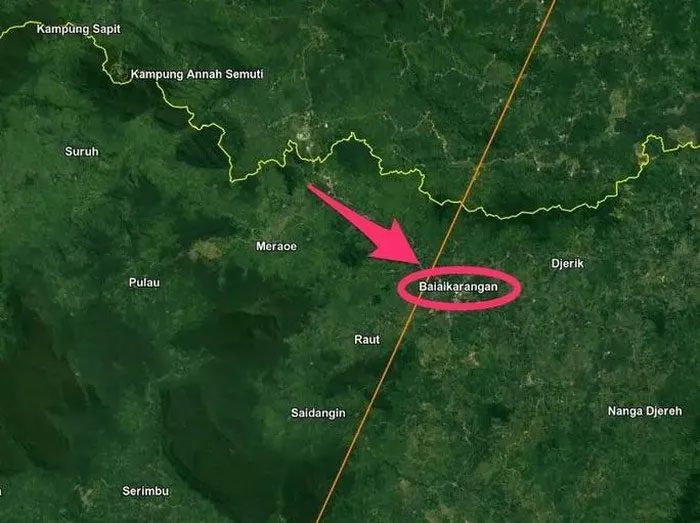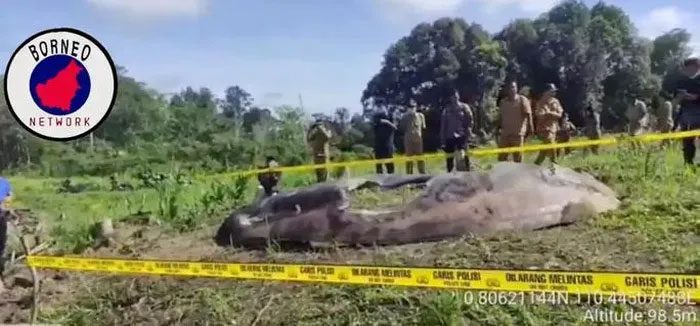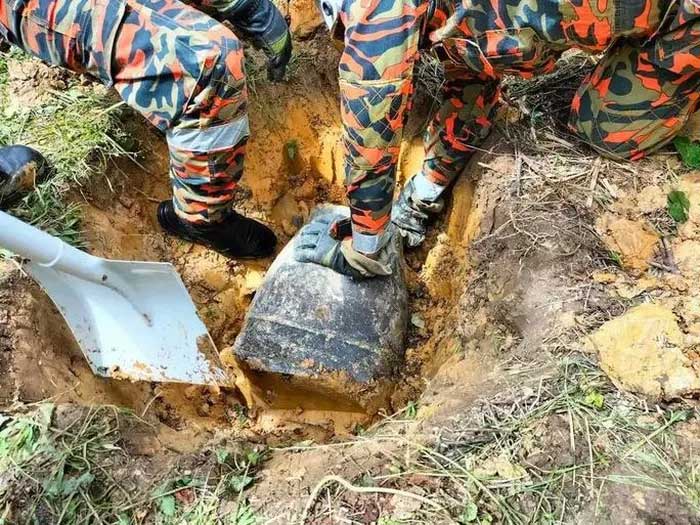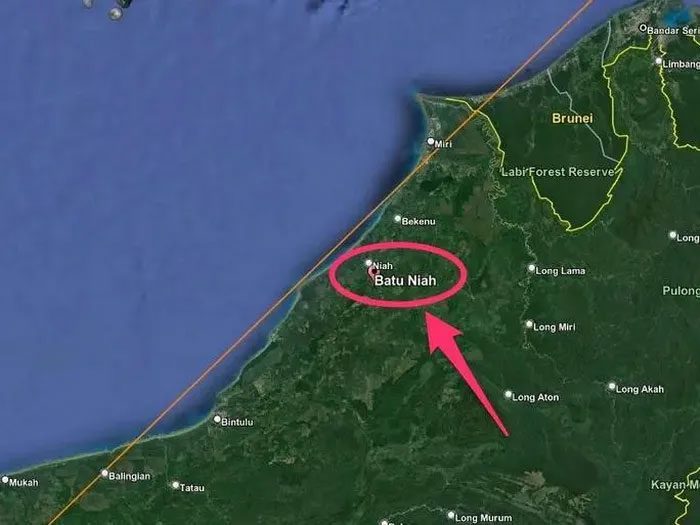Images from Malaysia, Indonesia, and the Philippines show charred debris suspected to be fragments from the Chinese Long March 5B rocket.
The Business Insider recently published a series of images depicting various sizes of space debris collected by authorities in the three countries over the past few days. According to experts, these are fragments from the Long March 5B rocket, which the United States criticized China for allowing to fall uncontrollably back to Earth on July 30.

Firefighters in Sepupok, Malaysia inspecting debris – (Photo: MALAYSIA NEWS AGENCY)
According to Space, the main body of the 25-ton Chinese rocket re-entered the atmosphere over the Indian Ocean; however, it is estimated that 20-40% of the massive debris remains unburned and will fall into the sea, potentially scattering fragments across various locations. Many Southeast Asian countries lie directly in the path of the rocket’s descent.
In the village of Pengadang, near Balaikarangan in the Indonesian part of Borneo, locals discovered a large round object resembling the central part of the Chinese rocket.

Map showing Balaikarangan directly in the path (yellow) of the Chinese rocket as it fell back to Earth – (Photo: JONATHAN MC DOWELL)

“Unidentified object” in Balaikarangan – (Photo: MALAYSIA NEWS AGENCY)
“There is a very convincing photo of a large piece at the end of the fuel tank lying in a field. The diameter matches. It looks like a leftover fragment and is right on the descent path,” said astrophysicist Jonathan McDowell from the Harvard-Smithsonian Center for Astrophysics to Business Insider.
Consultant Ted Muelhaupt from the Aerospace Corporation’s Chief Engineer Office (based in the U.S.) stated, “There is no reason to dispute that this is debris from the rocket.”
Meanwhile, images from Sepukok and Sarawak in Malaysia show authorities inspecting two different charred unidentified objects, also believed to be parts of the Long March 5B.

Debris in Sepukok, Malaysia – (Photo: MALAYSIA NEWS AGENCY)

Batu Niah, a town in Sarawak, Malaysia also lies in this descent path. Many small fragments were found here – (Photo: JONATHAN MC DOWELL)
Typically, the bodies of rockets are designed to separate early and are guided to crash into uninhabited areas or oceans. However, NASA indicated that the Long March 5B’s body went too far into orbit before falling, resulting in an uncontrolled re-entry to Earth.

Personnel in protective gear inspecting another piece of debris in Sarawak, Malaysia – (Photo: MALAYSIA NEWS AGENCY)
Another image circulating on China’s Weibo shows residents—believed to be from the Mindoro Strait in the Philippines—pulling something from the water featuring the flag and blue emblem of the Chinese space agency. This strait also lies in the rocket’s descent path.
Previously, the Philippine Space Agency also announced that a “torn metal fragment” was found by a fisherman off the coast of Mamburao, identified as part of a rocket tube; while components of the booster fell offshore in the Sulu Sea.
“This means we were hit by two pieces of debris from this launch, at the beginning and end of the rocket’s flight. This indicates a high risk for us, as our country lies under the flight path of most Chinese rocket launches,” said Professor Jay Batongbacal from the Institute for Maritime Affairs and Law of the Sea at the University of the Philippines.





















































